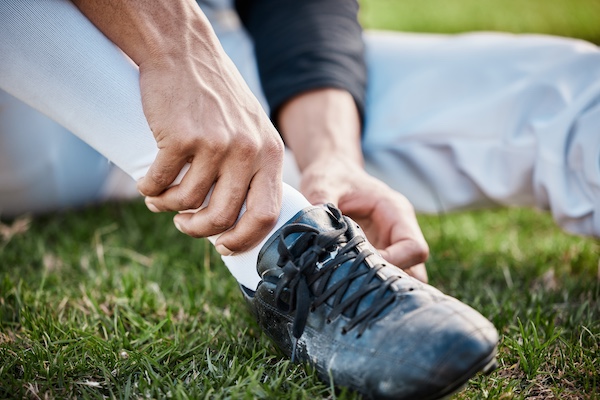Athlete’s foot, known medically as tinea pedis, is a common fungal infection that affects the skin on the feet. Despite its name, this condition doesn’t just affect athletes; anyone can get it. It often starts between the toes and can spread to the soles of the feet, toenails, and even hands in severe cases.
What Causes Athlete’s Foot?
Athlete’s foot is caused by a group of fungi known as dermatophytes. These fungi thrive in warm, moist environments, such as the areas between your toes, communal showers, locker rooms, and around swimming pools. Wearing tight, non-breathable shoes or keeping your feet wet for long periods can increase the risk of developing this infection.
Common Symptoms
The symptoms of athlete’s foot can vary, but they often include:
- Itching and Burning: The affected areas, especially between the toes, can feel intensely itchy and may burn.
- Redness and Scaling: The skin may become red, scaly, and flaky.
- Cracked Skin: The skin might crack, leading to pain and possible secondary bacterial infections.
- Blisters: In some cases, small, fluid-filled blisters can develop.
Effective Treatments for Athlete’s Foot
Treating athlete’s foot usually starts with over-the-counter antifungal medications, which can be in the form of creams, sprays, or powders. Here are some common treatments:
- Topical Antifungal Creams: These are applied directly to the affected area and are effective in most mild cases.
- Antifungal Powders and Sprays: These are particularly useful for preventing the infection from returning and keeping feet dry.
- Oral Antifungal Medications: For severe cases or infections that don’t respond to topical treatments, your doctor may prescribe oral antifungal medication.
In addition to these treatments, it’s essential to maintain good foot hygiene to prevent the infection from worsening or returning. This includes keeping your feet clean and dry, changing socks regularly, and wearing breathable shoes.
When to See a Podiatrist
While most cases of athlete’s foot can be managed with over-the-counter treatments, there are situations where you should seek professional help from a podiatrist, such as the experts at Podiatry of Greater Cleveland. Consider seeing a podiatrist if:
- The infection persists: If your symptoms don’t improve after a few weeks of treatment, it may be time to see a specialist.
- The infection spreads: If the infection spreads to your nails, hands, or other parts of your body, a podiatrist can provide more aggressive treatments.
- You have diabetes: People with diabetes are at a higher risk of complications from foot infections, so it’s crucial to seek treatment early.
- You experience severe pain or discomfort: If the itching, burning, or pain becomes unbearable, professional intervention may be needed.
Prevention Tips
To avoid future infections, consider these prevention tips:
- Keep your feet clean and dry.
- Avoid walking barefoot in communal areas.
- Change socks regularly, especially after sweating.
- Wear breathable shoes and avoid tight footwear.
- Use antifungal powders if you’re prone to infections.
Conclusion
Athlete’s foot is an annoying but treatable condition. With proper care and attention, most people can manage the symptoms effectively. However, if you find that over-the-counter treatments aren’t working or if you have underlying health concerns, don’t hesitate to contact Podiatry of Greater Cleveland. Our experienced podiatrists are here to help you get back on your feet, free from discomfort and infection.
For more information or to schedule an appointment, visit our website or give us a call. Your foot health is our priority!

